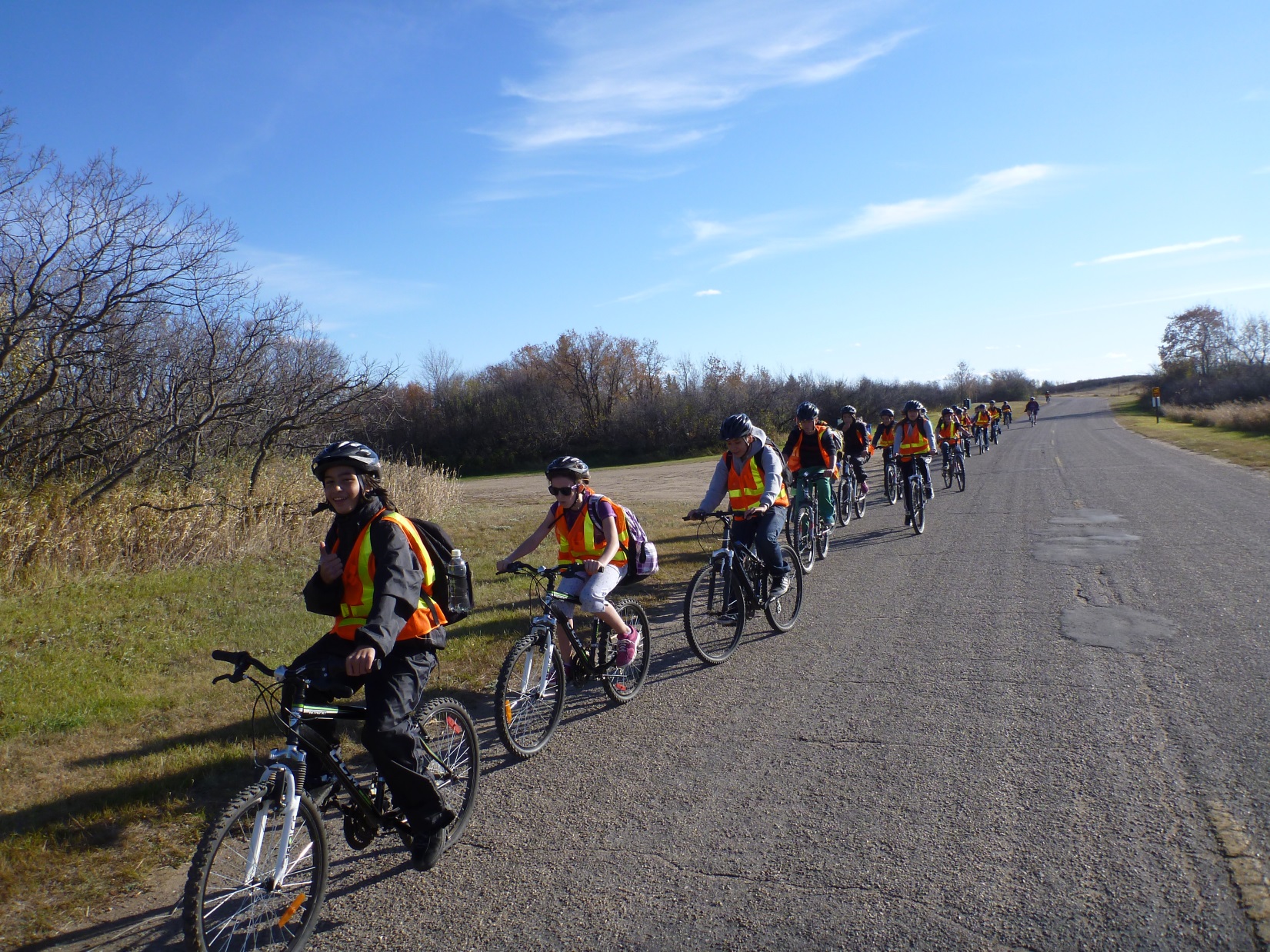
“The best math lessons happen after supper on a camping trip,” says Chris Clark, a teacher with the Saskatoon Public School’s Nikanetan program. “The kids are physically tired. They’ve eaten well, slept well; they’re getting in tune with the way human beings are supposed to be. We may do traditional math – even fractions, one of the most challenging concepts – but that’s okay because they haven’t been lectured to all day long.”
Nikanetan is an experiential education program for students in grade 8. The focus is on teamwork and leadership and is designed to re-engage youth who are at risk of dropping out of school. The program is based out of Westmount Community School. All equipment, transportation, and food costs are covered by the program so money is not a barrier to participation.
EXPERIENTIAL LEARNING
In experiential learning, students learn by doing and participating. Building quinzhees under different snow conditions is an opportunity to explore structures and how snow works. Shopping for groceries before a camping trip requires mathematics.
“Experiential learning has been around for thousands of years,” Chris says. “And it works. The kids will tell you that they’ve never been so engaged with education and their teachers as they are in this program.”
SUSTAINABILITY
Nikanetan focuses on teamwork and leadership in order to re-engage students. Sustainability and the environment are not core components of this program. “Environmentalism, sustainability, recycling are things you do when you’re rich,” Chris says. “Environmentalism, sustainability, recycling are easier to do when you are well-off,” Chris says. “It can be difficult to buy quality products that can be fixed or local, organic food if you are having problems making ends meet.”
Knowing their students’ backgrounds, the teachers don’t tell students what to do. “We tell students what science is saying about the future and then ask them what they can do,” Chris explains.
Each student is expected to choose a sustainability project. Their goal is to make an impact with the hope that this will become an attitude that they will maintain throughout their lives. Last year the students raised money for breast cancer and a school in Africa. “They didn’t feel they could have an impact on sustainability, but they could help others who had less than them,” Chris says.
Sustainability projects typically involve sharing information with others (e.g. other classes), which also fits with the leadership focus of the program.
It’s difficult to offer in-depth nature studies – “With 28 grade 8 kids, how many bears do you think there are around? We don’t even hear birds.” – but Chris says that they take advantage of any opportunity that comes their way. Drumming is a chance to not only make music but to learn about the history of drumming, hide-making and animals. On visits to Pike Lake, they observe how the scenery changes with the seasons.
WORDS OF ADVICE
Chris emphasizes the importance of getting outdoors: “You don’t need tons of money to go outside or to go camping. Just do it.”
EcoFriendly Sask
www.ecofriendlysask.ca
This story was originally published in the June 2016 issue of DIRECTION Magazine, “Connecting to Nature.”
Read the full issue of DIRECTION here.



